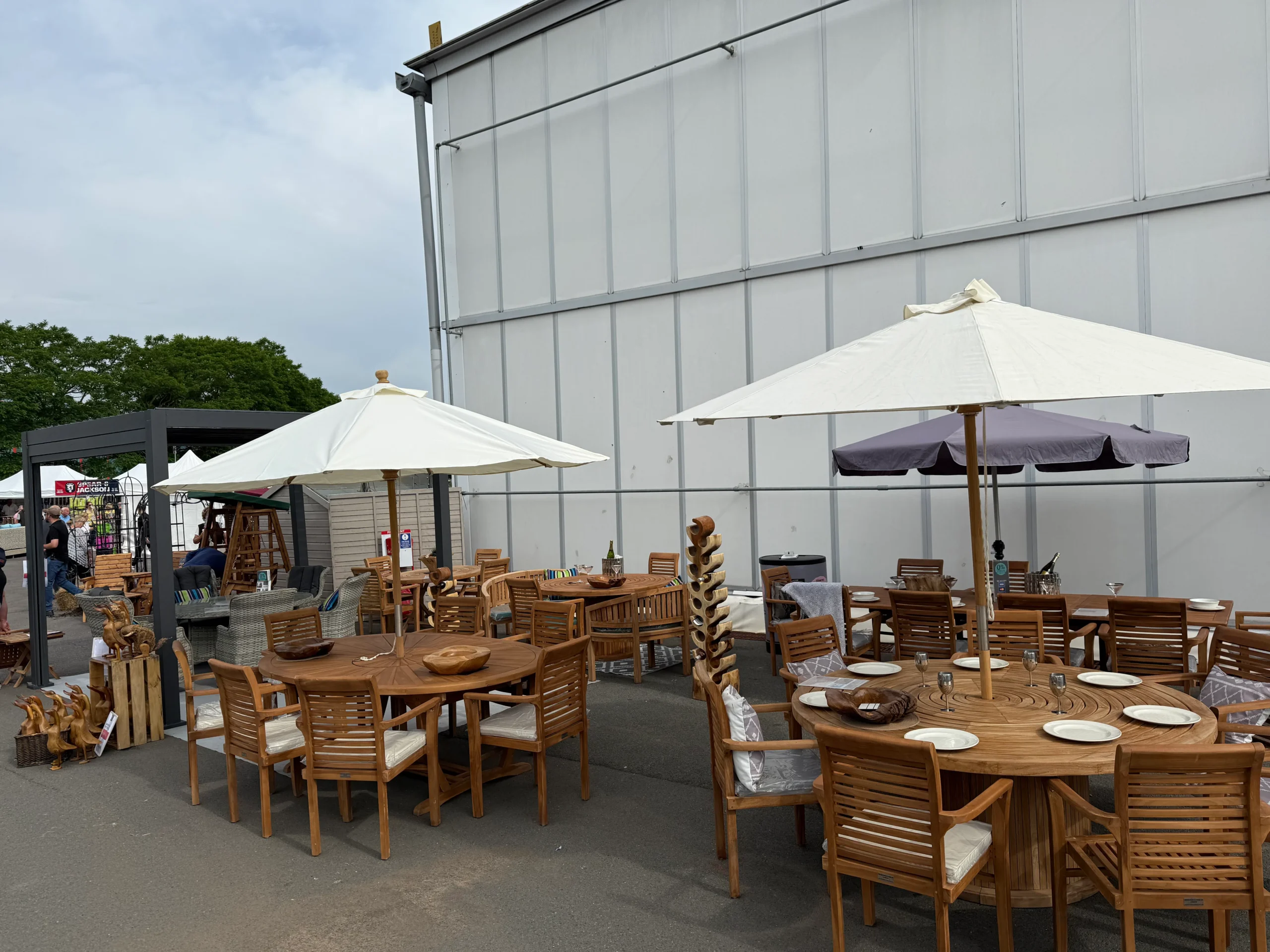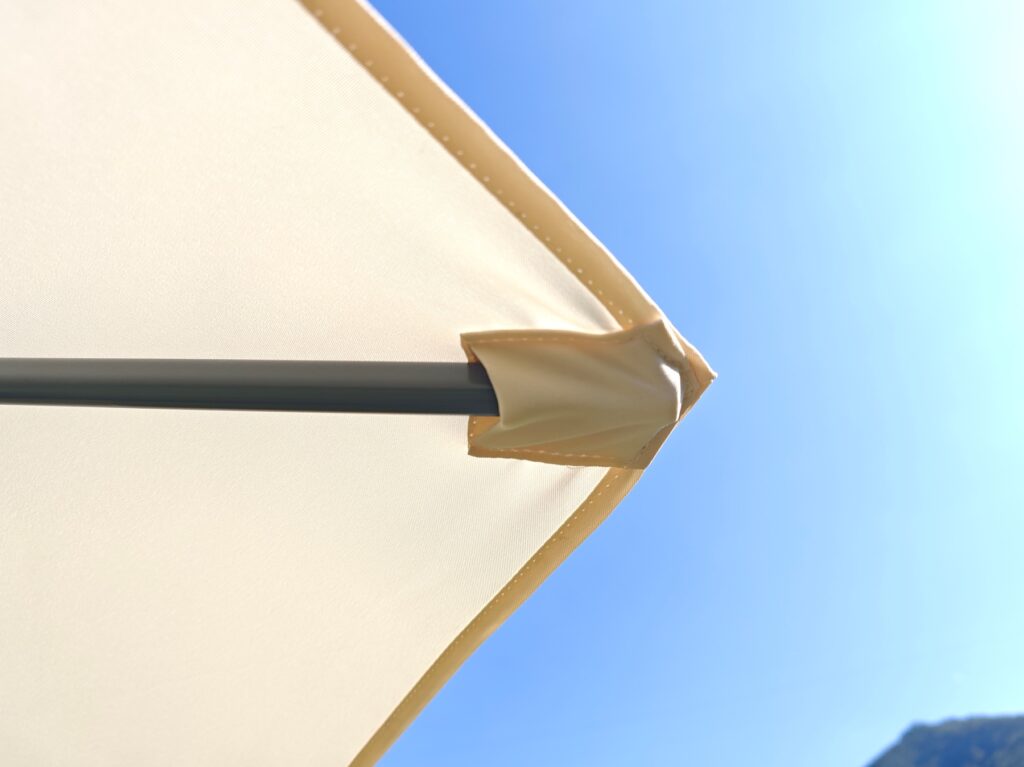Did you know that the best garden furniture layouts include teak dining sets under aluminium pergolas, rattan lounge areas with retractable awnings, and teak benches positioned along garden pathways?
Creating a cohesive outdoor space isn’t just about randomly placing furniture items together. In fact, coordinating colours and patterns is essential for an organized and unified look. When we select our garden furniture, whether it’s rattan garden furniture or wooden garden furniture, we need to consider how different pieces work together. The rule of three is particularly helpful here, suggesting we choose three different material types to avoid going overboard.
At Teak Garden Furniture Outlet, we have found that lighter colours like soft grey, pale green, and white create an illusion of more space by bouncing light around. Additionally, warm tones bring energy to garden parties and BBQ areas, while calming shades create perfect restful retreats for lazy afternoons. Whether you’re looking to create a cozy corner nook or select the right dining set for entertaining guests, this guide will help you discover garden furniture combinations that not only look stunning together but also complement your outdoor environment.
Understanding What Makes Furniture Work Together
Creating visually pleasing garden spaces requires understanding how furniture elements complement each other. Selecting pieces that work harmoniously together transforms an ordinary garden into a sophisticated outdoor living area.
The role of colour, material, and shape
Colour coordination forms the foundation of cohesive garden furniture arrangements. A thoughtful approach involves following the 60-30-10 rule: 60% dominant colour, 30% secondary colour, and 10% accent colour. This creates visual balance without overwhelming the space. For outdoor settings, neutrals like white, grey, or beige work excellently as base colours, with bolder hues introduced through cushions or accessories.
Materials significantly impact the overall aesthetic of your garden. Certain combinations create naturally appealing contrasts:
-
Wood and metal create warmth balanced with modernity
-
Wicker and glass blend organic with sleek elements
-
Concrete and teak offer contemporary, high-end appeal
Furthermore, repeating materials across different furniture pieces helps maintain consistency. For instance, if you have a wooden dining set, consider incorporating wooden elements in your lounge chairs.
Shape and style coherence equally contribute to unified designs. Modern elements pair wonderfully with boho touches, consequently creating spaces that feel curated rather than cookie-cutter. The key is anchoring your space with one dominant style, then adding complementary elements for contrast.
Why balance matters in outdoor spaces
Balance creates harmony in garden design, making viewers feel comfortable yet providing visual interest. It can be achieved through symmetry, which mirrors elements on both sides, or asymmetry, which creates a more natural look despite being less obvious. The ultimate goal remains achieving equilibrium, as if your garden were a see-saw with each element contributing to overall balance.
To achieve balance in your outdoor space, begin by selecting a focal point such as your rattan garden furniture or teak garden bench. Position this primary element in prime view from your house to naturally draw people outside. Leave 55-75 cm between furniture pieces for comfortable traffic flow, and consider adding multi-dimensional balance with raised planters or aluminium pergolas in flat gardens.
Popular Garden Furniture Combinations That Work
Exceptional garden spaces often rely on furniture pairings that harmonize together. The right combinations can transform your outdoor area into a stylish extension of your home.
Rattan and teak garden furniture for a natural look
Combining rattan garden furniture with teak creates a timeless natural aesthetic. This pairing works exceptionally well because both materials share organic qualities while offering complementary textures. Teak’s warm, golden tones and polished surface provide sophistication, whereas rattan offers a casual, inviting vibe. Moreover, teak’s natural durability ensures your furniture maintains its striking appearance throughout the seasons. For a complete look, consider teak dining sets paired with rattan accents.
Charcoal metal with bright cushions for contrast
Charcoal garden furniture creates a sophisticated foundation that allows colourful elements to shine. Made from powder-coated aluminium frames resistant to rust and cracking, these pieces combine durability with style. Specifically, charcoal pieces paired with vibrant cushions create striking visual contrast. This combination works wonderfully for contemporary outdoor spaces, essentially providing a neutral backdrop that makes colourful plants and accessories pop.
Wooden garden furniture with soft neutrals
Wooden garden furniture exudes natural warmth and beauty. Acacia and eucalyptus varieties offer exceptional weather resistance. Pairing these woods with soft neutral tones creates a timeless, inviting atmosphere. Teak garden benches with cream cushions offer a particularly elegant combination. The chunky profiles of wooden dining sets provide perfect foundations for outdoor banquets and even work beautifully in conservatories.
White aluminium with blue accents for a coastal feel
For a breezy coastal aesthetic, white aluminium furniture paired with blue accents creates a relaxed seaside vibe. This combination evokes shoreline tranquility regardless of your actual location. Primarily using white as a base colour reflects light beautifully, whilst blue cushions or accessories (particularly in cobalt or navy tones) add the perfect maritime touch. Complete this look with striped rugs and consider adding a parasol for shade during sunny afternoons.
How to Match Furniture with Your Garden Environment
Selecting furniture that harmonizes with your garden creates a seamless outdoor living experience. The perfect garden setup requires thoughtful consideration of your existing environment.
Blending with surrounding flora and hardscaping
The most cohesive gardens match furniture materials with natural elements. Wooden teak garden benches naturally complement greenery, creating a rustic look that integrates seamlessly with plants and trees. Alternatively, for contemporary gardens with stone features, metal and aluminium pieces offer sleek contrast. Placing planters strategically around seating areas helps blend furniture with vegetation, creating natural transitions.
Considering house exterior and flooring tones
Your home’s exterior should guide furniture colour selection. Coordinate your garden furniture with existing colour schemes—neutral tones provide versatility whilst bold hues create dramatic contrast. For warm-toned paving (yellows, tans, browns), pair with creams, olive greens or terracotta cushions. Cool-toned paving (greys, blues) works beautifully with black frames and navy accents.
Using garden tables and dining sets to define zones
Garden tables essentially become the backbone of outdoor spaces, dividing areas into functional zones. An L-shaped corner sofa naturally creates an inviting nook perfect for gatherings. Dining sets establish clear focal points for entertaining, whilst bistro sets work wonderfully in smaller areas. Consider adding parasols or aluminium pergolas to define zones further and provide practical shade.
Tips to Personalise and Accessorise Your Combinations
The finishing touches make all the difference when creating distinctive garden spaces. Personalisation transforms standard combinations into uniquely yours.
Layering with cushions, throws, and planters
One of the best ways to instantly update your garden furniture is through layering soft accessories. Adding outdoor cushions and throws in complementary colours and patterns creates instant personality without breaking the bank. This approach works wonderfully with teak garden benches and rattan garden furniture. Scatter cushions and outdoor rugs help create a homely retreat, subsequently blurring the lines between indoor and outdoor living.
Using shade structures like aluminium pergolas or gazebos
Aluminium pergolas and gazebos serve dual purposes; they provide protection from harsh UV rays whilst creating the feeling of an extra room in your garden. Additionally, these structures offer privacy and create defined zones for different activities. With quick-assembly options like GUNNÖN gazebo, you can immediately create cooling shade for summer lunches.
Choosing fade-resistant fabrics for longevity
As a result of exposure to elements, ordinary fabrics quickly deteriorate outdoors. Obviously, selecting UV-resistant fabrics ensures colours stay sharp even after long summer days. Solution-dyed acrylic fabrics are coloured throughout like a carrot (not surface-dyed like a cucumber), ensuring longevity. These fabrics remain resistant to fading, stains, mould and mildew, certainly making them ideal for garden furniture sets.
Testing colours in natural light
Colours appear dramatically different outdoors compared to indoors. Above all, always check swatches in both sunlight and shade before committing to a scheme. Natural light varies throughout the day, affecting how your garden accessories look alongside your wooden garden furniture. This step helps prevent disappointing results and ensures your personalised combinations work harmoniously in all lighting conditions.
Conclusion
Creating the perfect garden space certainly involves more than simply purchasing whatever catches your eye. Throughout this guide, we’ve explored how thoughtful combinations of garden furniture can transform your outdoor area into a harmonious extension of your home.
First and foremost, understanding the principles of colour coordination, material matching, and balanced arrangement forms the foundation of successful garden design. The 60-30-10 rule provides a practical framework, while combining complementary materials like wood and metal or wicker and glass adds depth and interest to your space.
Additionally, we’ve discovered several winning furniture combinations that stand the test of time. Rattan garden furniture paired with teak creates a naturally elegant look, while charcoal metal with vibrant cushions offers contemporary contrast. Similarly, wooden garden furniture with soft neutrals exudes timeless warmth, and white aluminium with blue accents captures that breezy coastal feel.
Above all, your garden furniture should complement your existing environment. This means considering your surrounding flora, hardscaping elements, and even your home’s exterior when making selections. Teak garden benches and dining sets can help define functional zones while blending beautifully with your garden’s natural elements.
Personalisation ultimately makes your garden uniquely yours. Layering with cushions and throws, adding parasols or aluminium pergolas for shade, and selecting high-quality, fade-resistant fabrics ensures both style and longevity.
The secret to a truly successful garden space lies in thoughtful planning rather than impulse purchases. Take time to consider how different elements work together, test colours in natural light, and choose quality pieces that will weather the seasons beautifully. Your garden deserves the same careful consideration as any room inside your home, and with these guidelines, you can create an outdoor haven that brings joy for years to come.













